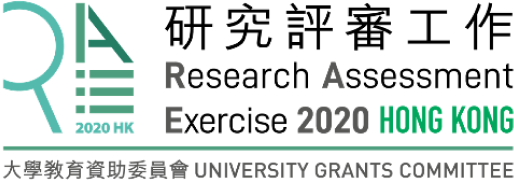Unit of Assessment:
Research categories:
?Computer Science
Computer Science, Interdisciplinary Applications (4)
Computer Science, Information Systems (2)
Engineering
Information Science & Library Science (3)
Funder acknowledgements:
?Beijing Municipal Science & Technology Commission (1)
Program for Excellent Talents in Beijing (1)
National Natural Science Foundation of China (NSFC) (5)
National Basic Research Program of China (973 Program) (1)
Jiangsu Demonstration Programme (1)
Humanities and Social Science Youth Foundation of Ministry of Education of China (2)
Case Study
Supporting research and innovation through research analytics and intelligence
1. Summary of the impact
Research undertaken in the Department of Information Systems, City University of Hong Kong, on research analytics and intelligence has resulted in the development of the Intelligent Research Information System as a Service (IRISaaS.com) and ScholarMate research social network platform (ScholarMate.com). The research was licensed through a former university subsidiary CITINet Systems Ltd. During 2013-18, over 80 government funding agencies and 100,000 research institutions have used the services (including National Natural Science Foundation of China), and over 3.6 million researchers have used ScholarMate to share and discover knowledge.
2. Underpinning research
Jian Ma (Professor, Department of Information Systems, City University of Hong Kong) has led the research team that works on research analytics and intelligence since 1998. As PI for the five National Natural Science Foundation of China (NSFC) funded projects (listed as follows) during 2013-2018, Prof Ma has proposed the innovation knowledge graph and research analytic framework for profiling of research entities (e.g., proposals and researchers). The methods have been used in the development and practical application of research information systems and social network services for supporting research and innovation.
1) Principal Investigator for the 2017 National Natural Science Foundation of China, Knowledge Graph Approach to Peer Reviewer Assignment, RMB500,000, 2018.01-2019.12
2) Co-Principal Investigator for the 2016 National Natural Science Foundation of China, Performance Management of Research Institutions in NSFC, RMB100,000, 2016.07-2017.12.
3) Principal Investigator for the 2015 National Natural Science Foundation of China, Evaluation of Reviewer Assignment System in NSFC, Project No: M1552003, RMB400,000, 2015.07-2017.12.
4) Principal Investigator for the 2014 National Natural Science Foundation of China, Research on NSFC Management Reports for Recipient Institutions, Project No: J1424002, RMB100,000, 2014.07-2015.12.
5) Principal Investigator for 2013 National Natural Science Foundation of China, Study on Computer Assisted Reviewer Assignment System, Project No: M3121003, RMB650,000, 2013.11-2014.10.
6) Principal investigator for the 2013 National Natural Science Foundation of China, Lean Research Management Information Systems, Project No: 71371164, RMB560,000.
The distinctive contribution of the research was to propose a novel method and to explore how it could be applied into the practical research and innovation applications. The key steps in the research were:
1) Prof Ma and his team proposed a novel Research Analytic Framework (RAF) to profile research entities (e.g., proposals, papers, patents, researchers and research institutions, etc.) in three dimensions of quality, relevance and connectivity (e.g., Liu et al., 2016; Sun et al., 2017; Wang et al., 2017). The proposed framework was applied to the development of the recommendation systems for various research and innovation applications, including peer reviewer assignment, university-industry collaborator recommendation, article recommendation and patent recommendation.
2) They designed a research knowledge graph for modeling of research and innovation activities (e.g., Sun et al., 2015), extending the heterogeneous information network with domain knowledge base. Domain ontologies were constructed using social network approach and efficient algorithms were designed to support the research knowledge graph. They evaluated the proposed methods with experiments and practical applications of the intelligent research information systems and the ScholarMate research social network platform. The results have shown great impact in research and innovation activities.
Using design science research methodology, the team first proposed novel methods of research analytic framework and research knowledge graph for modeling of research information systems, and then evaluated the performance of the proposed methods with experiments and practical applications in research and innovation activities.
3. References to the research
1) Sun J.; Jiang Y.; Cheng X.; Du W.; Liu Y.; Ma J., A hybrid approach for article recommendation in research social networks, Journal of Information Science, 2017.
2) Wang Q.; Ma J.; Liao X.; Du W., A context-aware researcher recommendation system for university - industry collaboration on R&D projects, Decision Support Systems, 103, pp 46-57, 2017/11.
3) Du, Wei; Cheng, Xusen; Yang, Chen; Sun, Jianshan; Ma, Jian, Establishing interoperability among knowledge organization systems for research management: a social network approach, Scientometrics, 112(3), pp 1489-1506, 2017/9.
4) Jiang, Hongbing; Yang, Chen; Ma, Jian; Silva, Thushari; Chen, Huaping, 2016, A social voting approach for scientific domain vocabularies construction, Scientometrics, 108(2), pp 803-820, 2016/8.
5) Liu, Ou; Wang, Jun; Ma, Jian; Sun, Yonghong, 2016, An intelligent decision support approach for reviewer assignment in R&D project selection, Computers in Industry, Vol 76, pp 1-10, 2016/2.
6) Xu, Wei; Sun, Jianshan; Ma, Jian; Du, Wei, 2016, A personalized information recommendation system for R&D project opportunity finding in big data contexts, Journal of Network and Computer Applications, Vol. 59, pp 362-369, 2016/1.
4. Details of the impact
CITINet Systems Ltd. was set up as the University’s subsidiary to commercialize R&D results at City University of Hong Kong in 2000. It has been the main vehicle to disseminate the research results to government funding agencies, universities, research institutions and industries, through developed software as a service. In the period of January 2013 to 2018, CITINet has used the research results to:
- Launch and support intelligent research information systems as a service (IRISaaS.com) in Hong Kong and the mainland China, for over 80 government funding agencies like National Natural Science Foundation of China (NSFC, the largest government funding agency in the world in terms of funded projects), and 12 provincial department of science and technology (e.g., Guangdong Provincial Department of Science and Technology), and over 10 universities (e.g., Hong Kong University).
- Launch and support the ScholarMate research social network service (ScholarMate.com) to support researchers for grant application, project management, research dissemination and technology transfer. There are over 3.6 million registered users who are using the services, and sharing and discovering knowledge (e.g., research papers) on the platform. Launch and support the InnoCity academic patent licensing platform (InnoCity.com). This allows researchers in universities to license the patent technologies, and industries to use the patent technology with ease. It allowed two parties to collaborate and innovate on the platform effectively.
The main impact of the research is the application of big data analytics and intelligence for peer review of research proposals in government funding agencies. A research analytic framework is proposed to represent the profiles of proposals and reviewers in terms of quality, relevance (e.g., disciplines and keywords) and connectivity (e.g., co-author networks and citation networks). Then the profiles of both research proposals and reviewers are matched and used for peer reviewer assignment tasks. The online peer reviewer system is developed and used in over 10 government funding agencies in China. It helps to minimize any conflicts of interest when reviewers are assigned to proposals.
Another impact of the research is the application of the professional research social network platform, ScholarMate, which links government funding agencies, universities and industries for innovation.
Methods of social network analysis are used to predict links and make recommendations in terms of potential research and innovation collaborations.
5. Sources to corroborate the impact
1) Recipient for the 2nd Award of 2013 Science and Technology Achievements of Guangdong Province for Intelligent Research Information Systems
2) Internet-based Science Information System (https://isisn.nsfc.gov.cn) used by the National Natural Science Foundation of China
3) Guangdong Science and Technology Information System (http://pro.gdstc.gov.cn/egrantweb/) used by the Department of Science and Technology, Guangdong Province
4) Hunan Science and Technology Information System (http://61.187.87.55/egrantweb/) used by the Department of Science and Technology, Hunan Province
5) Jiangxi Science and Technology Information System (http://ywgl.jxstc.gov.cn/egrantweb/#) used by the Department of Science and Technology, Jiangxi Province
6) Shangxi Science and Technology Information System (http://ywgl.snstd.gov.cn/egrantweb/) used by the Department of Science and Technology, Shangxi Province
7) Anhui Science and Technology Information System (http://kjgl.ahinfo.org.cn/egrantweb/) used by the Department of Science and Technology, Anhui Province
8) Innovation and Technology Fund Administration System (https://itcfas.itf.gov.hk/itcfas/) used by the Innovation and Technology Commission of the Hong Kong SAR Government
9) Guangxi Science and Technology Information System (http://gkg.kjt.gxzf.gov.cn/egrantweb/) used by the Department of Science and Technology, Guangxi Province
10) Reports of users, including the National Natural Science Foundation of China, the Center of Science and Technology in Guangdong Province, the Technology and Information Bureau of Shenzhen, Innovation and Technology Commission of Hong Kong, Peking University, Tsinghua University, Fudan University, Tianjin University, Sichuan University, The University of Hong Kong and City University of Hong Kong, and Sichuan University

